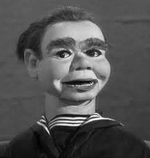This past weekend, while others rang in the New Year with parties and Bowl games, I entered a dimension not only of sight or sound, but of mind. My daughter alerted me to the Syfy network's "Twilight Zone" marathon early on NewYears Eve and from that point on I was hooked. Though I'm by no means a Twilight Zone expert, over the years I've seen the show seemingly countless times, so I was surprised to find that some of the episodes this go-around were new to me.
Of course the entire series is the brainchild of the ultra cool and stern narrator Rod Serling, who wrote most of the stories and opens each episode with a wry introduction. The series began in the late 50's, and just as Playboy magazine was redefining the girlie magazine, Serling, who comes across as "Hef's" more cerebral alter ego, brought the "bug-eyed monster" sci-fi genre from the pulp comics store into mainstream living rooms. The stories endure, despite low budgets and (by today's standards) cheesy special effects, because of the deep psychological insights that Serling brought to them. He also addressed controversial topics and contemporary hot button issues such as the Holocaust, nuclear war, and racial inequality.
Though "The Twilight Zone" only ran for five seasons, there were a stunning 156 episodes in total, 96 of which were written or co-written by Serling. Two of them, "It's a Good Life", which features child star Billy Mumy as a spoiled kid with terrifying mental powers, and "To Serve Man", in which earthlings are lured to an alien planet only to discover that they're to be "served" as food, were cited as being among TV Guide's "100 Greatest Episodes of All Time". So it's no wonder that I find it difficult to pick a personal favorite episode. Still, here are a couple that stand out for me:
"The Midnight Sun": NYC apartment tenant Norma (played by Oak Park, IL native Lois Nettleton) struggles to remain optimistic and cheerful despite the fact that the Earth has left its orbit and is plunging ever nearer to the sun. She finally collapses in fear and despair. (SPOILER:) In a twist on the "it's only a dream" ending, a relieved Norma awakes from her nightmare oblivious to the news that the doomed earth is actually RETREATING from the sun.
The recent Lars von Trier film "Melancholia"has a similar theme of people trying to keep it together in the face of impending celestial doom.
"The Dummy": Cliff Robertson stars as Jerry, a ventriloquist with problems. Besides battling alcohol, he's convinced that his creepy and malevolent dummy, Willie, is controlling his mind and his act. When Robertson resolves to replace Willie with a more docile costar, things get out of hand. As a kid, I was thoroughly weirded out by ventriloquist dummies, which I managed to overcome through immersion therapy when I asked and received one from Santa one Christmas. Still, this episode brings back those unsettling feelings, and the final scene, which features a role reversal with the doll/ventriloquist looking directly at camera, is unforgettably eerie.
So now that the "Twilight Zone" marathon has concluded, I wonder whether a new series of half hour sci-fi stories could be as successful today. The Twilight Zone was resurrected for a three season run in the late 80's and Serling himself hosted the series Night Gallery from 1970-73, which centered more on horror/fantasy stories, but neither attained the cult status and reputation of the classic Twilight Zone series. I'm sure there are many talented writers who could share the duties of scripting some incredible stories. As I see it, the main challenge would be wowing today's audiences accustomed to lavish sets and production values, something hard to attain with "one-off" characters and situations.
For a complete online list of the original Twilight Zone episodes along with brief descriptions, see "The Croc's Domain: Original Twilight Zone Episode Guide".
So what's your favorite episode? Comments and thoughts welcome.




